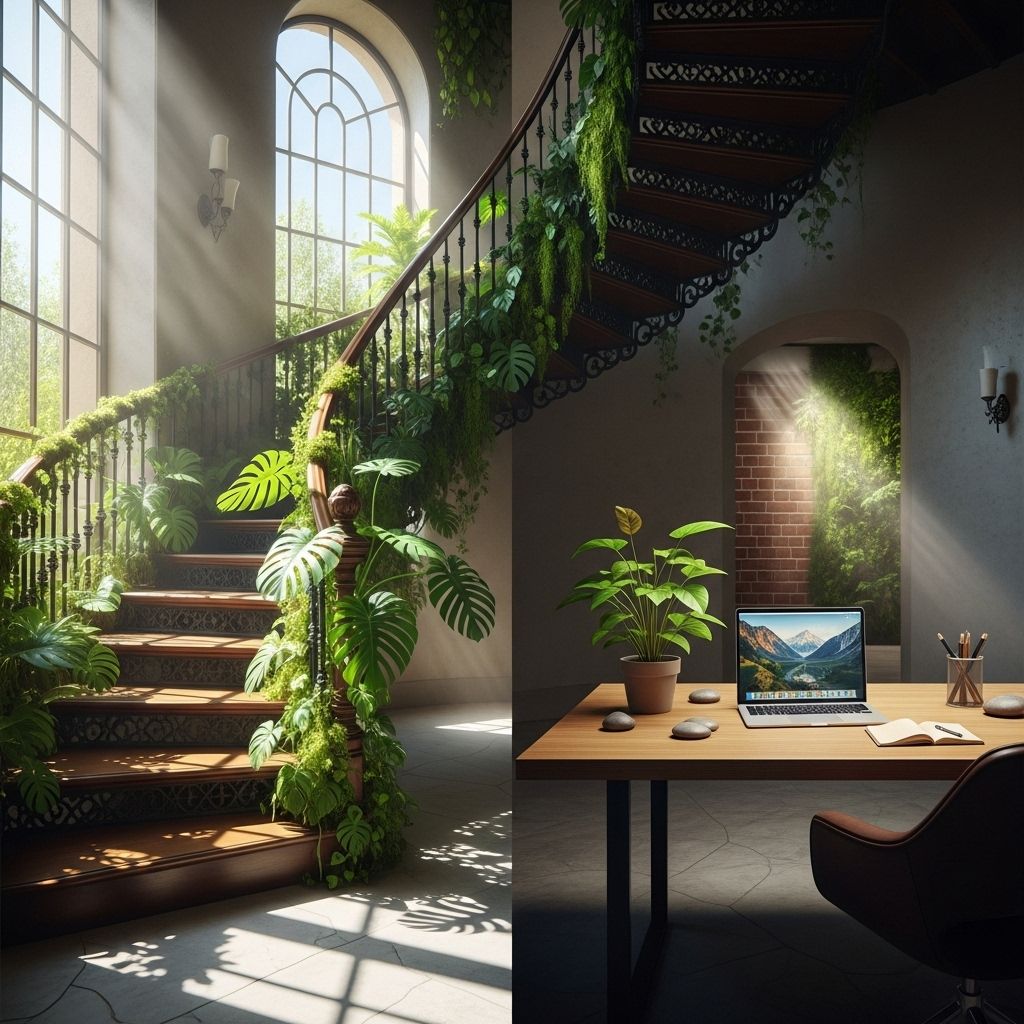Recognizing Biophilia: The Innate Need for Nature
Connecting with the natural world fosters resilience, creativity, and lasting calm.

Table of Contents
Definition and Origins of Biophilia
Evolutionary Perspective on Biophilia
Health Benefits of Nature Connection
Biophilic Design and Architecture
Introduction
Biophilia, or “love of life,” is a concept that underscores the intrinsic human connection with nature. This innate tendency, first proposed by biologist Edward O. Wilson, suggests that humans are genetically predisposed to seek connections with the natural world. The biophilia hypothesis posits that this connection is not only beneficial but essential for human well-being and health.
Despite its origins in scientific theory, biophilia has become a cornerstone in various fields, including environmental science, psychology, and architecture. The hypothesis has been supported by extensive research demonstrating the positive impacts of nature on human health, cognitive function, and emotional well-being.
Definition and Origins of Biophilia
The term “biophilia” was initially used by psychologist Erich Fromm in his work *The Anatomy of Human Destructiveness* (1973), where he described it as “the passionate love of life and of all that is alive.” However, it was Edward O. Wilson who popularized the concept in his 1984 book *Biophilia*, suggesting that humans have an innate tendency to affiliate with nature and life forms, which is partially genetically based.
Wilson defined biophilia as “our innate tendency to focus upon life and life-like forms and, in some instances, to affiliate with them emotionally.” This definition highlights two key aspects of biophilia: fascination and affiliation. Fascination refers to the involuntary attention humans pay to natural settings, which can lead to restorative effects on mental health. Affiliation involves emotional connections with nature, which can range from awe to fear.
Evolutionary Perspective on Biophilia
From an evolutionary standpoint, biophilia can be seen as a complex of learning rules that have evolved over time to provide humans with a survival advantage. This innate predisposition to interact with nature is not instinctive but rather a manifestation of a phenotype that has been favored by natural selection. Biophilia is considered a stable personality trait, present from early childhood and influenced by both genetic and environmental factors.
The phylogenetic perspective on biophilia suggests that it is not just a local or cultural phenomenon but a universal aspect of human nature. This perspective helps explain why humans across different cultures consistently express a deep-seated love for nature, even in the face of urbanization and technological advancements.
Biophobia and Its Role in Biophilia
Biophilia is not isolated from its counterpart, biophobia, which refers to fear or strong negative responses to certain natural stimuli. This duality is important as it highlights that while humans have a natural affinity for nature, there are also evolutionary reasons for fear responses to certain aspects of nature, such as predators or venomous animals. Biophobia and biophilia are intertwined, with biophobia serving as a protective mechanism against potential threats in the natural environment.
Health Benefits of Nature Connection
Extensive research has demonstrated the numerous health benefits associated with biophilic experiences. Being in nature or even just viewing natural environments can lower cortisol levels (a hormone associated with stress), improve cognitive function, enhance creativity, and promote better sleep quality. Nature exposure has also been linked to faster recovery from surgery and improved mental health outcomes.
Examples of biophilic experiences that contribute to these health benefits include walking in parks, gardening, and spending time near bodies of water. These activities not only provide physical exercise but also offer emotional and psychological benefits by fostering a sense of calm and connection with the natural world.
Benefits in Modern Urban Settings
In urban environments, where access to natural spaces may be limited, integrating biophilic elements into daily life can be crucial. This can be achieved through simple practices such as keeping plants indoors or incorporating natural elements into architectural design. Such efforts help maintain a connection with nature, even in highly urbanized settings, thereby supporting mental and physical well-being.
Biophilic Design and Architecture
Biophilic design is a movement in architecture and interior design that aims to reconnect people with nature within built environments. This approach incorporates elements of nature, such as natural light, plants, and water features, into buildings to enhance occupant comfort, productivity, and well-being. Biophilic design principles are based on the biophilia hypothesis, recognizing that humans have an innate need to connect with natural environments.
Examples of biophilic design include green roofs, living walls, and large windows that provide views of natural landscapes. These design elements not only improve indoor air quality and reduce stress but also create spaces that are more aesthetically pleasing and conducive to creativity and collaboration.
| Biophilic Design Elements | Benefits |
|---|---|
| Green Roofs | Improved insulation, stormwater management, habitats for wildlife |
| Living Walls | Air quality improvement, aesthetic appeal, noise reduction |
| Natural Light | Enhanced mood, improved sight, reduced need for artificial lighting |
Frequently Asked Questions
Q: What is the biophilia hypothesis?
A: The biophilia hypothesis posits that humans have an innate tendency to seek connections with nature and other forms of life, which is partially genetically based.
Q: What are the health benefits of biophilic experiences?
A: Biophilic experiences have been linked to lower stress levels, improved cognitive function, better sleep quality, and faster recovery from surgery.
Q: How can I incorporate biophilia into my urban lifestyle?
A: Incorporating plants into your home, spending time in local parks, or participating in activities like gardening can help maintain a connection with nature in urban environments.
Q: What is biophilic design?
A: Biophilic design is an architectural approach that integrates elements of nature into built environments to enhance occupant well-being and productivity.
References
- https://www.terramai.com/blog/understanding-biophilia-hypothesis/
- https://pmc.ncbi.nlm.nih.gov/articles/PMC8334556/
- https://hlw.org.au/news/biophilia-humans-innate-love-for-the-natural-world
- https://www.britannica.com/science/biophilia-hypothesis
- https://www.cignaglobal.com/blog/body-mind/connection-with-nature-and-biophilia-help-mental-wellbeing
- https://www.lunabotanicals.com/journal/biophilia
- https://www.learnbiomimicry.com/blog/what-is-biophilic-design
Read full bio of Sneha Tete












